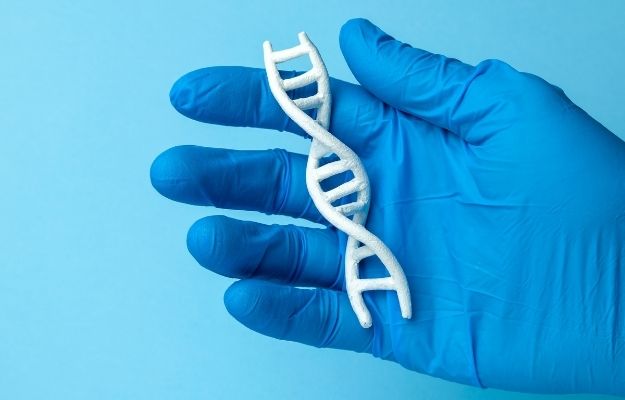Epigenetic modifications may prove to be useful in fighting the COVID-19 pandemic. Read on to learn all about it.
RELATED: Cancer Epigenetic Driver Mutations in ARID1A
In this Article:
- SARS-CoV2 and COVID-19
- Epigenetic Modification
- CRISPR Molecular Tool
- Epigenetic Modification Applications in the COVID-19
- Other Applications of Epigenetic Modification
Applying Epigenetic Modifications Against COVID-19
SARS-CoV2 and COVID-19

SARS-CoV2 is the virus responsible for the COVID-19 pandemic. In the United States alone, there have been more than six million confirmed coronavirus cases and over 180,000 deaths.
In the last week of August, an average of over 40,000 new cases was reported every day. Throughout most of August, there was an average of 1,000 deaths each day.
As the pandemic continues, scientists are working hard to find effective treatment protocols and prevention mechanisms against COVID-19. One promising field to watch out for is Epigenetics. Its applications are very promising and may offer a unique COVID-19 prevention strategy.
Epigenetic Modification

Epigenetics is a field that focuses on the effects of DNA modifications. Unlike the broader field of genetics, though, it doesn’t involve any changes in the DNA sequence.
Instead, epigenetics focuses on the chemical tags attached to DNA that can alter gene expression. These tags act like light switches.
They can regulate gene activity by turning certain genes on or off. Epigenetics is a normal part of human functioning because it allows for the creation of different types of cells.
Researchers are learning, though, that impairment of epigenetic mechanisms may contribute to aging and illness. Studies show that epigenetic modification may help fix these mechanisms and restore functioning.
CRISPR Molecular Tool
CRISPR is a new molecular tool that researchers use for epigenome editing. Initially, the CRISPR system was for genetic editing.
Researchers used CRISPR to identify and alter sections of the genome. In epigenetics, researchers use CRISPR to change epigenetic markers in certain DNA areas rather than the DNA itself.
By focusing on epigenetic markers, researchers can reprogram DNA by turning certain areas on and off. One of the advantages of epigenetic editing over genetic editing is that it’s usually reversible because you’re altering chemical tags and not the DNA sequence.
RELATED: How Does An Epigenome Work? Understanding The Critical Element In Aging
Epigenetic Modification Applications for COVID-19
Researchers believe that epigenetic modification may be useful in fighting the COVID-19 pandemic. Studies show that the SARS-CoV-2 virus enters cells through the ACE2 protein.
ACE2 is a protein located around many cells. Until the pandemic, the protein was beneficial to one’s healthspan. It plays a role in regulating blood pressure.
Unfortunately, researchers discovered that SARS-CoV2 uses ACE2 as a dock to enter into cells. Theoretically, switching off the ACE2 gene would block the COVID-19’s entry point into the cell and control the infection.
The Hackett Group of researchers from the European Molecular Biology Laboratory are currently testing this theory in an animal study with mice. They’re attempting to turn off the ACE2 gene to check if it protects the animal from infection.
The initial animal study results will help researchers determine if this is a possible option for humans later on. There are also concerns about the negative effects of turning off the ACE2 gene.
Studies show that chronic impairment of ACE2 is linked to higher blood pressure. The researchers argue though that these risks can be mitigated since epigenetic modifications are reversible.
On top of that, the researchers believe that short-term impairment seems to be tolerable. Ideally, the ACE2 gene will only be turned off temporarily and only when there’s a high risk for infection. Once the risk abates, they can theoretically reverse the epigenetic modification.
Other Applications of Epigenetic Modification
The field of epigenetics has a lot of clinical potential. Its applications can be used to improve the diagnostic process and may even lead to the development of new treatment protocols.
The same technology used to silence the ACE2 gene can potentially be used on other potentially problematic genes. For example, Huntington’s disease is linked to a defective gene on chromosome 4.
It may be possible to use these technologies to target that single gene. Fragile X syndrome is another disease linked to defective genes.
For this syndrome, the FMR1 gene is switched off. In the future, epigenetic editing may be able to turn it on again.
Epigenetic researchers continue to explore the potential of these technologies and their various clinical applications. In the meantime, you may want to consider epigenetic applications that are already available.
For example, a biological age test is a useful tool for optimizing your healthspan. For more information, visit the TruDiagnostic website.
What excites you most about epigenetic modifications? Please share your thoughts with us in the comment section below.
Sources:
Up Next:





